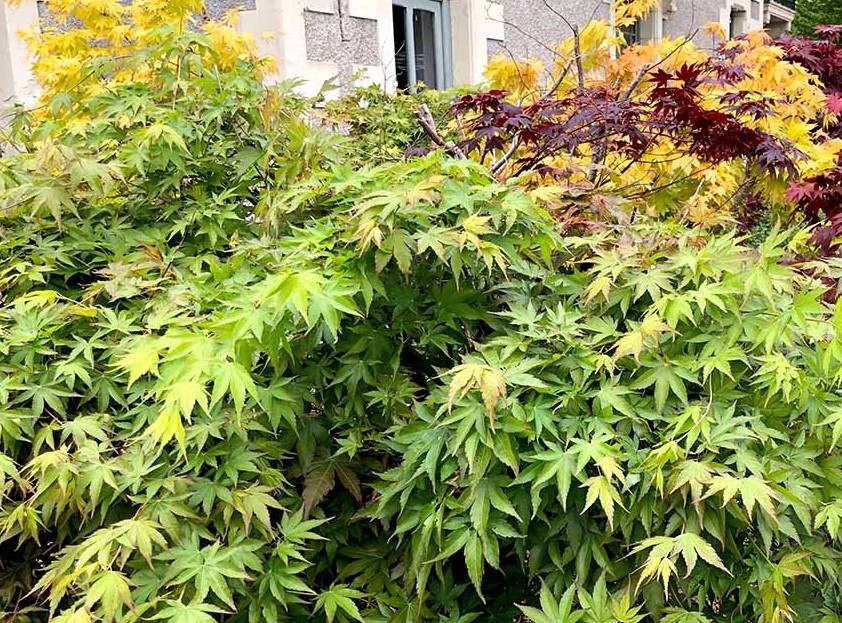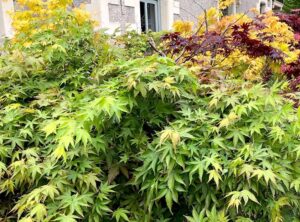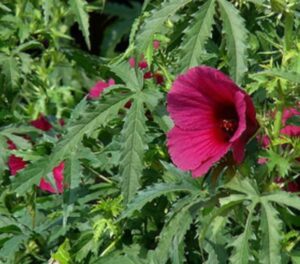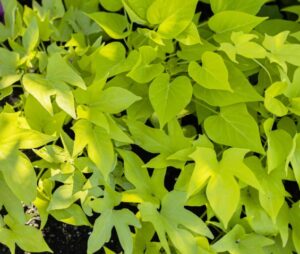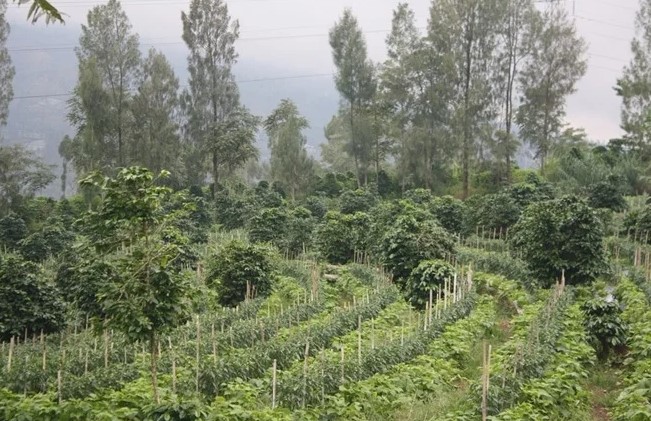Embarking on the journey of outdoor cannabis cultivation brings forth a unique set of challenges. Whether it’s navigating legal restrictions or ensuring utmost privacy, strategic approaches are paramount. In this comprehensive guide, we’ll delve into the realm of companion plants, specifically focusing on plants that look like cannabis. These botanical allies not only seamlessly integrate with cannabis but also serve as nature’s camouflage, creating a discreet shield for your outdoor cultivation endeavors. Understanding the significance of blending seamlessly with the surrounding environment is key to maintaining a low profile. Whether you’re a seasoned cultivator in search of innovative strategies or a newcomer venturing into the world of outdoor growth, discovering and utilizing plants that closely resemble cannabis can be a transformative tactic.
Characteristics of Plants that Look Like Cannabis
Exploring the world of companion plants that effectively disguise outdoor cannabis cultivation involves a keen understanding of the specific traits that contribute to seamless camouflage. These botanical allies are not chosen arbitrarily; rather, they possess distinct features carefully selected for their ability to blend harmoniously with cannabis. In this section, we delve into the precise characteristics that make certain plants stand out as effective camouflage:
Mimicking Growth Patterns: Plants selected for their camouflage potential mimic the growth patterns of cannabis, ensuring a cohesive and inconspicuous appearance within the cultivation space. This includes considerations such as similar plant heights, branching structures, and overall form.
Leaf Structures and Coloration: Detailed descriptions will highlight the visual similarities between companion plants and cannabis, focusing on key elements like leaf structures and coloration. This level of detail ensures that the chosen plants not only complement but convincingly resemble cannabis foliage.
Size, Shape, and Stature: The effectiveness of camouflage lies in diversity. We explore a range of sizes, shapes, and growth habits among selected plants. This diversity not only enhances the visual camouflage but also contributes to a resilient and dynamic outdoor cultivation environment.
Understanding these specific characteristics empowers cultivators to make informed decisions when selecting plants that look like cannabis. By honing in on the nuanced details, growers can create a natural disguise that not only conceals but enhances the overall aesthetic of their outdoor cannabis cultivation. Join us as we unravel the intricacies of these green companions and elevate your cultivation strategy.
Top Plants for Outdoor Concealment
Now, let’s explore a diverse array of plants meticulously chosen for their close resemblance to cannabis, providing an effective cover for outdoor cultivation. These selections not only share visual similarities but also offer practical advantages in creating a natural shield:
Japanese Maple (Acer palmatum)
- During the early stages of growth, the shape and structure of Japanese Maple leaves bear a striking resemblance to certain cannabis varieties, enhancing the visual deception.
Hibiscus (Hibiscus spp.)
- Certain varieties of hibiscus, with their distinctive serrated leaves, can be easily mistaken for cannabis, contributing to an effective camouflage strategy.
Kenaf (Hibiscus cannabinus)
- Related to hibiscus, kenaf shares visual characteristics with cannabis, making it a potential choice for those seeking a diverse range of companion plants.
Okra (Abelmoschus esculentus)
- The leaves of okra plants share a similar shape with cannabis leaves, adding to the variety of visual elements that contribute to an inconspicuous outdoor cultivation space.
Sweet Potato Vine (Ipomoea batatas)
- The leaves of sweet potato vines exhibit certain visual similarities to cannabis leaves, offering an additional layer to the camouflage strategy.
Chaste Tree (Vitex agnus-castus)
- Chaste tree’s leaves and growth patterns bear a resemblance to cannabis, providing both visual mimicry and practical advantages for concealment.
These carefully selected plants, each chosen for its specific visual similarities to cannabis, create a harmonious and discreet environment for your outdoor cultivation endeavors. When strategically combined, they form a natural screen that not only conceals but enhances the overall aesthetics of your cannabis cultivation space.
Strategic Placement and Cultivation Tips of Plants That Look Like Cannabis
As we’ve identified a range of plants that closely resemble cannabis, the success of your outdoor concealment strategy depends on strategic placement and cultivation techniques. Here, we delve into essential tips to maximize the effectiveness of your green camouflage:
A. Diversify Plant Placement:
- Arrange companion plants strategically to create a diverse and natural-looking environment. Consider variations in height, color, and foliage density to mimic the organic diversity found in nature.
B. Mimic Natural Growth Patterns:
- Observe the natural growth patterns of cannabis and aim to replicate these with companion plants. Mimicking the spacing and distribution of leaves contributes to a convincing camouflage.
C. Grouping and Intermixing:
- Group similar plants together and intermix them with cannabis to create a seamless blend. This grouping technique confounds visual distinctions and enhances the overall camouflage effect.
D. Optimize Sunlight Exposure:
- Consider the sunlight requirements of both cannabis and companion plants when planning their placement. Optimize sunlight exposure for each species to ensure healthy growth and maintain the natural appearance of the cultivation space.
E. Regular Pruning and Maintenance:
- Implement a regular pruning schedule to control the growth of companion plants and prevent them from overshadowing or dominating the cannabis plants. Maintenance practices should prioritize the natural appearance of the entire cultivation area.
F. Addressing Soil and Water Needs:
- Be mindful of the soil and water requirements of each plant species. Group plants with similar needs together to simplify irrigation and ensure optimal growing conditions for all components of your concealment strategy.
G. Adjust Plant Density as Needed:
- Regularly assess the density of the companion plants in relation to cannabis. Adjust planting density based on the growth stage of the cannabis plants to maintain an effective camouflage throughout the cultivation cycle.
By incorporating these strategic placement and cultivation tips, you can elevate the effectiveness of your outdoor concealment strategy. The artful arrangement of these carefully selected plants will not only hide your cannabis crop but also create a visually appealing and harmonious outdoor environment. Join us in the next section as we explore common mistakes to avoid in implementing this camouflage approach.
Common Mistakes Growing Plants that Look Like Cannabis
While creating a natural camouflage for your outdoor cannabis cultivation, it’s crucial to be aware of common pitfalls that can compromise the effectiveness of your strategy. Here are key mistakes to avoid:
A. Lack of Plant Diversity:
- Mistake: Relying too heavily on one or two companion plants without sufficient diversity.
- Solution: Introduce a variety of plants to mimic the natural biodiversity of the environment, enhancing the overall camouflage.
B. Ignoring Local Regulations:
- Mistake: Neglecting to research and comply with local regulations regarding cannabis cultivation and the use of companion plants.
- Solution: Stay informed about regional laws to ensure your concealment strategy remains within legal boundaries.
C. Overlooking Growth Patterns:
- Mistake: Failing to consider the growth patterns and size potential of companion plants.
- Solution: Plan for the growth of all plants involved, preventing overcrowding and maintaining a balanced, natural appearance.
D. Neglecting Maintenance:
- Mistake: Underestimating the importance of regular pruning and maintenance.
- Solution: Implement a consistent maintenance schedule to control plant growth, prevent overcrowding, and preserve the overall aesthetic.
E. Poor Sunlight Planning:
- Mistake: Inadequate consideration of sunlight needs for both cannabis and companion plants.
- Solution: Optimize sunlight exposure by placing plants according to their individual requirements, ensuring healthy growth for all.
F. Incorrect Plant Placement:
- Mistake: Placing companion plants haphazardly without considering their visual impact.
- Solution: Thoughtfully arrange plants to create a convincing and natural camouflage, paying attention to color, height, and density.
G. Inadequate Pest Management:
- Mistake: Ignoring pest management for both cannabis and companion plants.
- Solution: Implement integrated pest management strategies to protect the entire cultivation space and maintain plant health.
By avoiding these common mistakes, you can enhance the effectiveness of your outdoor concealment strategy, ensuring a successful and discreet cannabis cultivation environment. Join us in the next section as we delve into legal considerations and ethical practices associated with concealing outdoor cannabis grows.
Legal and Ethical Considerations
Creating a concealed outdoor cannabis cultivation space requires adherence to legal regulations and ethical practices. In this section, we explore the crucial considerations that cultivators must bear in mind:
A. Local Legal Compliance:
- Adhere to local laws and regulations governing cannabis cultivation, including any restrictions on the use of companion plants. Stay informed about the legal framework in your region to ensure a compliant and risk-free operation.
B. Environmental Impact:
- Consider the ecological impact of your cultivation practices. Avoid invasive species and prioritize plants that complement the local ecosystem, promoting biodiversity rather than disruption.
C. Responsible Water Usage:
- Practice responsible water management to minimize environmental impact. Efficient irrigation systems and water conservation measures contribute to sustainable cultivation practices.
D. Respect for Neighbors:
- Be mindful of neighboring properties and residents. Strive to maintain a low profile, minimize visual impact, and mitigate potential nuisances such as strong odors.
E. Ethical Treatment of Plants:
- Treat all plants with respect and care, recognizing their role in your concealment strategy. Avoid overharvesting or damaging companion plants, promoting a balanced and sustainable ecosystem.
F. Transparency with Authorities:
- If legal regulations permit, consider open communication with local authorities about your cultivation practices. Transparency can build understanding and cooperation, potentially easing concerns within the community.
G. Commitment to Sustainability:
- Embrace sustainable cultivation practices, from soil health to resource usage. Prioritize methods that minimize environmental impact and contribute positively to the surrounding ecosystem.
By navigating legal requirements and adhering to ethical considerations, cultivators can ensure a responsible and sustainable concealed outdoor cannabis cultivation. Striking a balance between legal compliance, environmental responsibility, and ethical practices is integral to the success and longevity of such cultivation endeavors. Join us in the concluding section as we summarize key insights and encourage responsible cultivation practices.
Conclusion
In the pursuit of concealing outdoor cannabis cultivation, the strategic use of companion plants offers not only visual camouflage but also a harmonious and sustainable approach. By carefully selecting plants that look like cannabis, strategically placing them, and avoiding common mistakes, cultivators can create a discreet and appealing environment. However, success in this endeavor hinges on legal compliance, ethical considerations, and a commitment to sustainable practices. Adhering to local regulations, respecting the environment, and fostering open communication with neighbors and authorities are crucial for responsible cultivation. As the cannabis community explores innovative strategies, it remains imperative to strike a balance between discreet cultivation and ethical, legal, and sustainable practices. By doing so, growers can contribute to a positive and harmonious coexistence with their surrounding communities.

